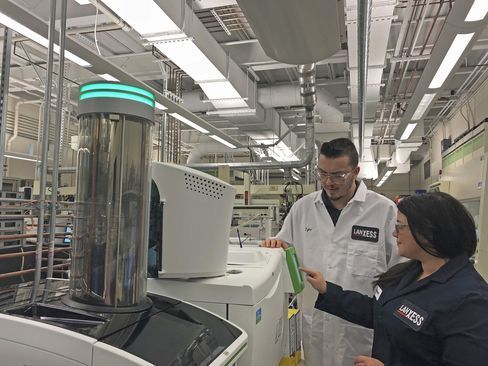LANXESS extends collaboration with University of Massachusetts Amherst
Access to research on structure-property relationships, 3D printing and additive manufacturing
LANXESS’ Urethane Systems business unit (URE) decided to prolong and extend its collaboration with the Center for UMass/Industry Research on polymers (CUMIRP) at the University of Massachusetts Amherst, USA. From October 2018 onwards URE will additionally participate in Research Cluster M on Mechanics & Advanced Manufacturing of Polymers and Composites.

The collaboration of LANXESS Urethane Systems business unit with the Center for UMass/Industry Research on Polymers (CUMIRP) at the University of Massachusetts Amherst, USA, focuses on additive manufacturing technology innovation and next-generation 3D printing formulations.
LANXESS AG
One of the cluster research areas is additive manufacturing technology innovation and next-generation 3D printing formulations. The focus in these efforts is to generate resins that have superior interfacial strength and enhanced sintering or reaction kinetics. Additive manufacturing is in the strategic focus of LANXESS Urethane Systems.
The CUMIRP Cluster M mainly works on understanding structure-process-property relationships of next-generation materials together with the development of new process methods or additives that simultaneously improve processability, and engineering properties. In the last few years the cluster has focused on applying this know-how to development of novel materials for additive manufacturing. “By joining this cluster, we will have access to the most recent technological developments in the field of 3D printing and additive manufacturing as well as to unique testing equipment targeted to screen materials for additive manufacturing and be part of a broader industrial community in this field,” says Dr. Polina Ware, head of Global Research and Development at URE. “Further, this collaboration will strengthen LANXESS’ relationship with UMass overall and help us in the long run to attract top talents.”
LANXESS expects cost savings from the collaboration through sophisticated, highly efficient solutions as well as benefits in business competition by using progressive technologies and the recruiting of qualified specialists. Furthermore, access to other companies who could be potential partners and/or customers will be provided.
Other news from the department science
These products might interest you

Eclipse by Wyatt Technology
FFF-MALS system for separation and characterization of macromolecules and nanoparticles
The latest and most innovative FFF system designed for highest usability, robustness and data quality

HYPERION II by Bruker
FT-IR and IR laser imaging (QCL) microscope for research and development
Analyze macroscopic samples with microscopic resolution (5 µm) in seconds

Get the chemical industry in your inbox
By submitting this form you agree that LUMITOS AG will send you the newsletter(s) selected above by email. Your data will not be passed on to third parties. Your data will be stored and processed in accordance with our data protection regulations. LUMITOS may contact you by email for the purpose of advertising or market and opinion surveys. You can revoke your consent at any time without giving reasons to LUMITOS AG, Ernst-Augustin-Str. 2, 12489 Berlin, Germany or by e-mail at revoke@lumitos.com with effect for the future. In addition, each email contains a link to unsubscribe from the corresponding newsletter.



























































